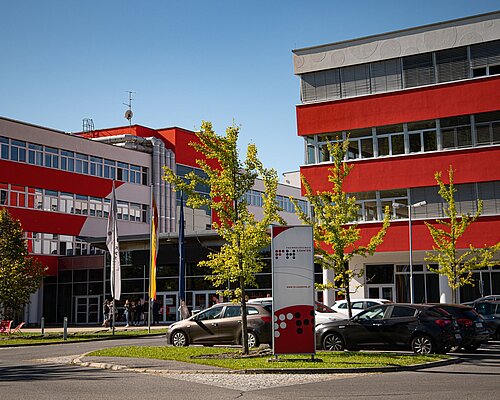FIRST BIODIVERSITY RESEARCH CENTER IN AUSTRIA

Carinthia University of Applied Sciences (CUAS) is taking a significant step toward the future by founding the Interdisciplinary Centre for Ecosystem Services and Biodiversity (I.C.E.B.)—Austria’s first research center dedicated specifically to biodiversity and ecosystem services. The goal is to use systematically and data-driven measures to understand biodiversity, while also unlocking its potential for business and society.
INNOVATIVE IMPULSES FOR SCIENCE AND INDUSTRY
I.C.E.B. links ecological research with innovative technologies and practical applications to generate new insights for the economy, science, and society. With €2.5 million in funding from the Austrian Research Promotion Agency (FFG) and a long-term partnership with the private foundation of Kärntner Sparkasse, this center is setting new regional benchmarks.
With 35 international researchers and state-of-the-art equipment, the new research center aims to take a leading role in biodiversity technologies in Austria. It brings together the expertise of three complementary research departments:
MCA (Management of Conservation Areas) focuses on researching species diversity and ecosystem services.
SIENA (Spatial Informatics for Environmental Applications) develops digital methods for recording and analyzing biodiversity using technologies such as AI, drones, and satellites.
CoNNA (Conservation Needs and Nature-based Adaptation) translates research findings into practical measures for communities, companies, and infrastructure projects.
OPEN-AIR LAB AS A UNIQUE RESEARCH AREA
Even before the I.C.E.B. was founded, CUAS had been utilizing Metschacher Moos near Zweikirchen—one of the largest open-air labs for biodiversity research in Austria. This unique natural area, provided by the Kärntner Sparkasse Foundation, will now become an integral part of the new center. Technologies, such as drones and sensor networks, enable long-term studies and ecological restoration projects to be implemented and documented there.
ADDED VALUE FOR COMPANIES AND COMMUNITIES
Businesses and municipalities benefit in many ways from the center’s in-depth knowledge and practical research: it facilitates measurable sustainability achievements in line with EU taxonomy and ESG criteria, as well as the monetary valuation of biodiversity and ecosystem services for better integration into planning processes. Sustainable land use planning can also lead to cost savings—for example, through reduced flood protection needs or improved climate regulation. The attractiveness of real estate is also noticeably increased through nature-oriented design. Furthermore, reliable biodiversity data opens access to funding and improved financing opportunities.
HANDS-ON RESEARCH FOR STUDENTS
Students at CUAS also benefit directly from the opportunities offered by the new research center. They can actively participate in research projects and gain hands-on experience with modern methods of biodiversity assessment and environmental analysis. Teaching content related to sustainable planning, digitalization in ecology, and biodiversity is being significantly expanded and integrated into education and training—particularly through the English-taught bachelor’s degree program Green Transition Engineering.
With I.C.E.B., Carinthia is sending a clear signal for sustainable development and positioning the region as a leading hub in the field of biodiversity and ecosystem technologies.